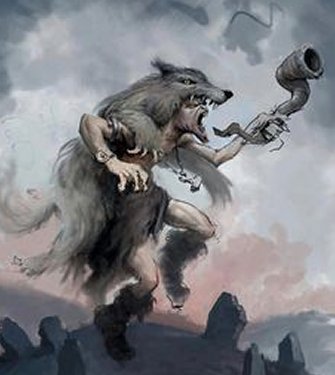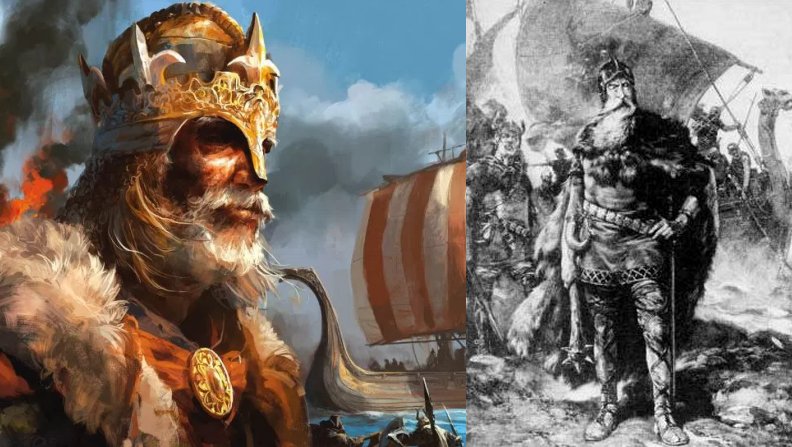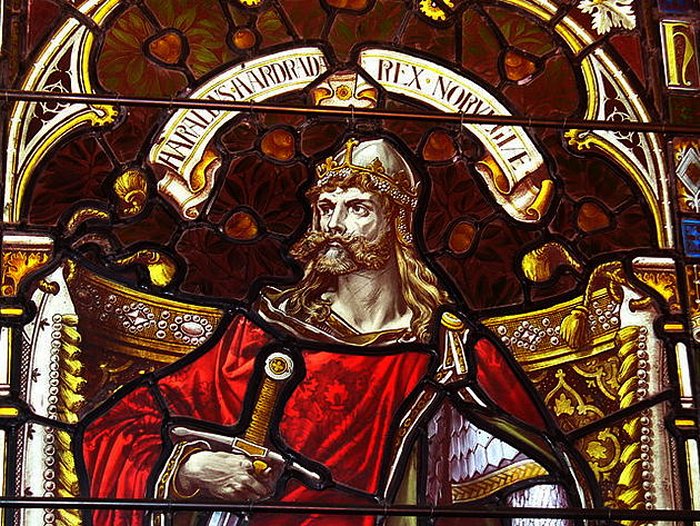Berserkers: Icelandic Viking ‘Mad Warriors’ In The Army Of God Odin
A. Sutherland - AncientPages.com - Icelandic Viking warriors known as ‘berserkers’ (in Old Norse: ‘berserkr’) were feared by enemies and even their battle companions.
These warriors - half-naked and covered in furs - entered into combat in trance, possessed by hatred and blind fury, even without armor or protection. The berserkers did not fear pain and death and they had a strong desire to kill.
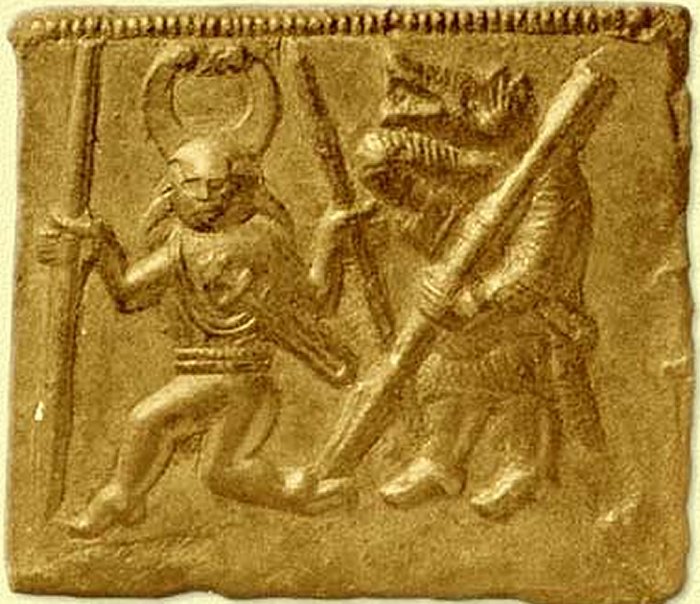
Vendel-period bronze plate discoverd on Öland (Torslunda socken), Sweden. Image credit: Bengans historia sidor_wadbring.com
How did they get the spirit of reckless attack in order to fight madly as they did?
The berserkers are mainly known from Icelandic literature but the most cited source is the "Ynglinga saga" dated to 1220 AD, In his work, Snorri Sturlusson describes berserks as 'mad fighters' without body armor:
"Woden's [Odin's] men went without hauberks and raged like dogs or wolves. They bit their shields and were strong like bears or bulls. They killed men, but neither fire nor iron hurt them…”
See also:
Were The Viking Berserkers True Warriors Or Drug Addicts Fighting In Trance?
Famous Viking Ragnar Lodbrok – Legendary Fearless Sea-King Of The North
Mysterious Jomsvikings: Fearless Scandinavian Warrior-Brotherhood
Vikings: Facts And History About The Tough Norse Seafaring People
What the word ‘berserker’ ("björnsärk") means is uncertain, but one theory proposes a reasonable explanation that the word is related to Odin warrior’s habit of wearing a coat (Old Norse: “serkr”) made from the pelt of a bear (Old Norse: ber-) during their furious battles.
Ivar The Boneless Was A Berserker
Odin’s feared berserkers became a model for later generations of warriors that were insanely brave and feared nothing.
One example can be Ragnar Lodbrok’s son Ivar Ragnarsson widely known as Ivar the Boneless (794-873).
He was exceptionally violent and cruel Viking warlord, reputed to be a berserker.
He was reported to serve as a warrior in Denmark where he was said to lead an army of Berserker warriors.
In the Sagas, Ivar the Boneless is described as being more like a giant than an ordinary man.
His powerful arms were able to carry a bow that was much stronger than those used by other warriors and with heavier arrows.
It happens that not everything that ancient myths and legends tell seems to be only a fantasy.
During an excavation at the churchyard of St. Wystan’s in Repton in Derbyshire, in the East Midlands of England, archaeologists unearthed a skeleton of a 9-foot tall Viking warrior. This discovery made them believe, the remains belong to Ivar the Boneless. Ancient historical sources confirm that in 873, the Great Viking Army led by Ivar Ragnarsson (“the Boneless”) spent the winter in Repton.
Also, the Saga of Ragnar Lodbrok, Ivar’s father, states that Ivar the Boneless was buried in England.
Harald Hardrada Was A Famous Viking Warrior And A Berseker
Another reputed warrior who was believed to be the berserker, was Harald Hardrada “(hard ruler”) officially Harald III Sigurdsson (1015-1066), one of the most famed Viking leaders, who participated in the Battle of Stiklestad in 1030 AD at the age of 15.
Later (but before Hardrada became king of Norway) his Viking army of warriors were employed as protectors of the emperor and Harald became a military commander in Kievan Rus' and of the Varangian Guard in the Byzantine Empire.
Old customs and beliefs in powerful berserkers also survived in the famous medieval legend of Beowulf. Beowulf, a ‘prince of the Geats’ of southern Sweden, arrived with a small group of warriors ready to get rid of Grendel, an evil man-eating monster that is half-man and half-fiend.
To meet the monster on its own terms, he threw off his helmet, (“hauberk”) and sword, but still, his strength was that of thirty men, and he killed Grendel by pulling off one of the monster’s arms.
However, in its later, more Christianized version, mighty Beowulf trusts in God's power, not in strength coming from his altered state of mind, as did Odin’s brave warriors in the past.
Written by – A. Sutherland AncientPages.com Staff Writer
Copyright © AncientPages.com All rights reserved. This material may not be published, broadcast, rewritten or redistributed in whole or part without the express written permission of AncientPages.com
Expand for referencesReferences:
D. Clark,N. Perkins, Anglo-Saxon Culture and the Modern Imagination
Hightower, L. The Vikings: Raiders
Brownworth, L. The Sea Wolves
More From Ancient Pages
-
 Ancient Maya People Used Volcanic Ash To Build Pyramids When Huge Eruption Occurred
Archaeology | Sep 22, 2021
Ancient Maya People Used Volcanic Ash To Build Pyramids When Huge Eruption Occurred
Archaeology | Sep 22, 2021 -
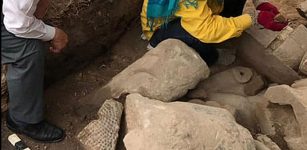 Buddha Statues With Broken Arms, Legs And Without Heads Unearthed In Angkor Wat, Cambodia
Archaeology | Apr 22, 2020
Buddha Statues With Broken Arms, Legs And Without Heads Unearthed In Angkor Wat, Cambodia
Archaeology | Apr 22, 2020 -
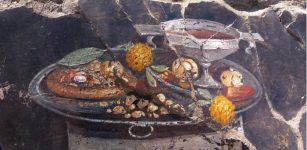 Ancestor Of Italian Pizza Depicted On Fresco In Pompeii
Archaeology | Jun 28, 2023
Ancestor Of Italian Pizza Depicted On Fresco In Pompeii
Archaeology | Jun 28, 2023 -
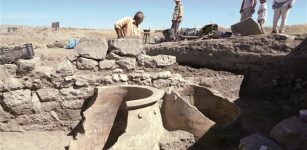 Huge Jars Unearthed In Kultepe, Turkey
Archaeology | Sep 27, 2015
Huge Jars Unearthed In Kultepe, Turkey
Archaeology | Sep 27, 2015 -
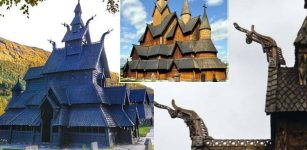 Unique Wooden Stave Churches Were Built Without Nails – Remarkable Technology Helped Them Survive
Featured Stories | Nov 15, 2022
Unique Wooden Stave Churches Were Built Without Nails – Remarkable Technology Helped Them Survive
Featured Stories | Nov 15, 2022 -
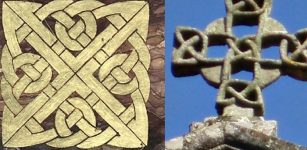 Celtic Knot Decorated Bible, Gospels, Celtic Crosses And Symbolized Strength, Love And Continuity Of Life
Ancient Symbols | Nov 8, 2018
Celtic Knot Decorated Bible, Gospels, Celtic Crosses And Symbolized Strength, Love And Continuity Of Life
Ancient Symbols | Nov 8, 2018 -
 Enigma Of The Mysterious Ancient Shining Twins – The Cosmos Connection – Part 2
Ancient Mysteries | Jun 8, 2020
Enigma Of The Mysterious Ancient Shining Twins – The Cosmos Connection – Part 2
Ancient Mysteries | Jun 8, 2020 -
 Roman glass-making furnaces discovered in Egypt’s Delta
Civilizations | Aug 25, 2015
Roman glass-making furnaces discovered in Egypt’s Delta
Civilizations | Aug 25, 2015 -
 Huge Untouched Vassal King Tomb From The Ming Dynasty Discovered In Xinfu District, China
Archaeology | Mar 22, 2024
Huge Untouched Vassal King Tomb From The Ming Dynasty Discovered In Xinfu District, China
Archaeology | Mar 22, 2024 -
 Ancient Ruins Of Nero’s Theater Discovered Under Garden Near Vatican
Archaeology | Jul 27, 2023
Ancient Ruins Of Nero’s Theater Discovered Under Garden Near Vatican
Archaeology | Jul 27, 2023 -
 Scientists Closer To Solving The Mystery Of When Animals Evolved
Evolution | Jul 6, 2023
Scientists Closer To Solving The Mystery Of When Animals Evolved
Evolution | Jul 6, 2023 -
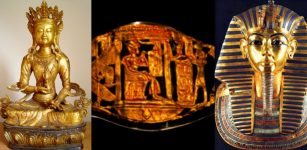 Ancient Sophisticated Technologies: Mercury-Based Gilding That We Still Can’t Reach
Ancient Technology | Aug 1, 2018
Ancient Sophisticated Technologies: Mercury-Based Gilding That We Still Can’t Reach
Ancient Technology | Aug 1, 2018 -
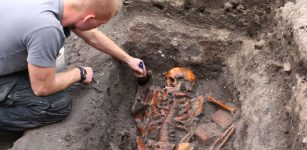 Evolution Of Plague Over Hundreds Of Years In Scandinavia Documented By Scientists
Archaeology | Feb 28, 2023
Evolution Of Plague Over Hundreds Of Years In Scandinavia Documented By Scientists
Archaeology | Feb 28, 2023 -
 More Than A Meteorite: New Clues About The Demise Of Dinosaurs
Paleontology | Dec 5, 2023
More Than A Meteorite: New Clues About The Demise Of Dinosaurs
Paleontology | Dec 5, 2023 -
 Mysterious Clay Tablet Reveals Babylonians Used Trigonometry 1,000 Years Before Pythagoras
Archaeology | Aug 24, 2017
Mysterious Clay Tablet Reveals Babylonians Used Trigonometry 1,000 Years Before Pythagoras
Archaeology | Aug 24, 2017 -
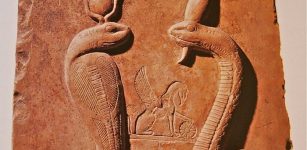 The Mystery Of Serpent Worship
Featured Stories | Jun 25, 2019
The Mystery Of Serpent Worship
Featured Stories | Jun 25, 2019 -
 Mystery Of The Ancient Reptilian Gods Remains A Complex Subject – Memories Of The Past – Part 1
Ancient Mysteries | Feb 6, 2022
Mystery Of The Ancient Reptilian Gods Remains A Complex Subject – Memories Of The Past – Part 1
Ancient Mysteries | Feb 6, 2022 -
 On This Day In History: Great Siege Of Gibraltar Begins – On June 16, 1779
News | Jun 16, 2016
On This Day In History: Great Siege Of Gibraltar Begins – On June 16, 1779
News | Jun 16, 2016 -
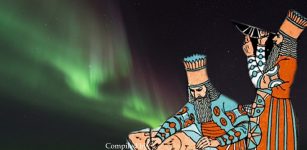 Evidence Of Unusual Solar Activity Discovered On Ancient Cuneiform Tablets
Archaeology | Oct 16, 2019
Evidence Of Unusual Solar Activity Discovered On Ancient Cuneiform Tablets
Archaeology | Oct 16, 2019 -
 Ancient Medical Machine Ahead Of Its Time Hidden In Emperor’s Temple – Secret Science Knowledge Examined
Ancient Mysteries | Apr 20, 2018
Ancient Medical Machine Ahead Of Its Time Hidden In Emperor’s Temple – Secret Science Knowledge Examined
Ancient Mysteries | Apr 20, 2018

